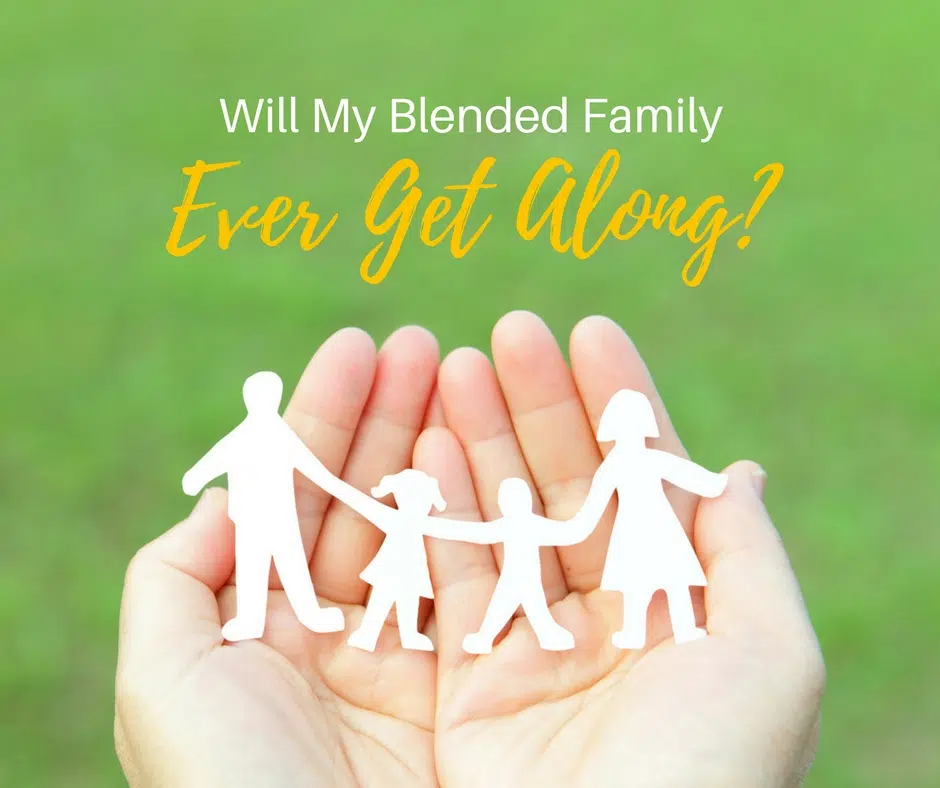I’m a stepparent in a blended family with seven kids. I gave birth to three of them, and four are stepkids. Do grandbabies count? I have four of those little people too, two more on the way. As you can imagine, I’ve spent days pulling my hair out, eyes glazed over, mumbling under my breath, “Will my blended family ever get along?”
As National Siblings Day approaches, I am surveying the relationships in our blended family. When my husband and I married 14 years ago, our kids were between the ages of 11 and 22. From the beginning, I intentionally viewed all of them as siblings.
The average blended family takes between five and seven years to actually blend … if they ever do. Here are a few reasons for this lengthy adjustment, from the kids’ perspective. The children see their blended family relationships very differently from their parents’ viewpoint.
Kids may ask:
1. Where do I belong? I am coming back from my Dad’s house, now at my Mom’s, and these other kids are here. Will they like me? Will they accept me? I’m not even sure I like them.
2. Where do I fit in? I used to be the baby of the family, now I am the oldest. What’s my role? I’m not sure I want to connect with these step siblings.
3. I’m jealous. Why do my step siblings get more time with my mom than I do? Why does it feel like they get more attention/gifts/privileges in the family?
4. I have no relationship with them. I was out of the house when my mom remarried. My Step Dad’s kids are like strangers to me. Why do I need to have a relationship with them?
By stepping into our kids’ shoes, we may also perceive family dynamics quite differently. If the siblings in a blended family are younger, their relationships will have a longer time to develop. Because of the life experiences they will share, they may, indeed, become as close as biological siblings.
If kids come into a blended family as pre-teens or teens, they’re already giving priority to their friends and activities outside of the home instead of step siblings. Bonding can occur, but the sibling relationships may be at a surface level because of the distractions.
When our kids come into a step family as adults, that’s a whole different ball game. Gil’s two oldest were out of the house and on their own when we got married. I realized my relationship would be different with them. I was “Dad’s wife.” Once I realized that, I could move into a role of being a cheerleader for them and an added support in their life. Just that they would acknowledge me was a win! With older step kids, I’ve need to let go of any expectations, and letting them set the pace. Whenever I saw an on-ramp open for engagement, I jumped on it! As far as their interaction with their step siblings, relationships have taken time to grow. Without rushing or forcing from our end, I am encouraged to see where their relationships are today.
Here’s what worked for me.
I had to let go of all my parental expectations of step sibling relationships. Trying to manage them or force them to happen just doesn’t work. They need to happen organically, at the kids’ pace. Yes, we as parents can orchestrate fun activities for them to connect, but it’s still up to the child to engage and trust their step sibling.
When our blended family of adult children gathers together now, I am very aware of who is speaking to whom, who’s laughing at what, and if there is any crossover from one family system to the other. And I’m no longer the wild-haired, glassy-eyed mutterer I used to be. Honestly, I don’t think any of our stepkids are BFFs, but something cool has developed over the years. All of my kids have a healthy respect and true care for each other. If those relationships never grow further, I’m a blessed woman.

















